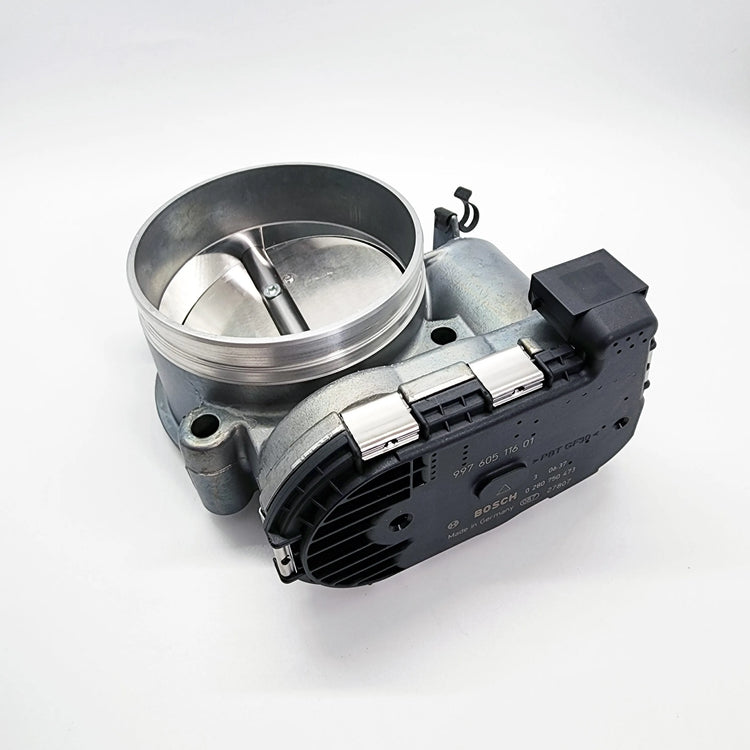In the ever-evolving landscape of automotive technology, one innovation has been gaining traction and transforming the way we drive – Drive-By-Wire (DBW) technology. Traditionally, vehicles relied on mechanical linkages to control various functions such as steering, braking, and throttle. However, DBW technology replaces these conventional systems with electronic controls, offering a myriad of advantages that are reshaping the automotive industry. In this article, we will delve into the numerous benefits of Drive-By-Wire technology, emphasizing how it is revolutionizing the way we drive.
- Enhanced Safety - Drive-By-Wire technology introduces a new level of safety to vehicles by incorporating advanced driver assistance systems (ADAS) and semi-autonomous features. These systems, such as adaptive cruise control and lane-keeping assistance, utilize electronic control to improve driver safety. For instance, adaptive cruise control uses sensors and cameras to maintain a safe following distance from the vehicle ahead, while lane-keeping assistance helps prevent unintended lane departures. These features not only reduce the likelihood of accidents but also mitigate the severity of collisions when they do occur, ultimately saving lives and reducing injuries on the road.
- Improved Fuel Efficiency - DBW technology enables more precise control over the vehicle's powertrain components, including the throttle. This precision allows for better optimization of fuel delivery, resulting in improved fuel efficiency. By electronically adjusting the throttle position, the system can reduce fuel consumption during idling or highway cruising while maintaining performance when needed. This not only benefits the environment but also reduces operating costs for vehicle owners, making DBW technology an attractive choice for eco-conscious consumers.
- Enhanced Driving Experience - Drive-By-Wire technology has the potential to enhance the overall driving experience. With electronic control of various vehicle functions, automakers can offer customizable driving modes, enabling drivers to tailor their driving experience to their preferences. Whether it's a more responsive and sporty setting or a relaxed and fuel-efficient mode, DBW technology allows for a wide range of driving experiences at the push of a button.
- Reduced Mechanical Complexity - One of the significant advantages of Drive-By-Wire technology is its ability to reduce the mechanical complexity of vehicles. Traditional mechanical linkages are replaced with electronic sensors and actuators, which not only saves space but also reduces the number of moving parts. This reduction in complexity can lead to increased reliability and lower maintenance costs for vehicle owners. Moreover, it allows automakers to design more streamlined and compact vehicle architectures, ultimately benefiting vehicle packaging and design.
- Future-Proofing and Connectivity - As the automotive industry continues to evolve, connectivity and integration with other technologies become increasingly important. Drive-By-Wire technology is inherently digital, making it easier to integrate with other systems, such as advanced infotainment and navigation systems, as well as autonomous driving technologies. This connectivity paves the way for vehicles to adapt and evolve with future technological advancements, ensuring that they remain relevant and competitive in an ever-changing market.
- Accessibility and Inclusivity - Drive-By-Wire technology can be tailored to accommodate individuals with varying physical abilities. With electronic controls, it is possible to adapt the sensitivity and responsiveness of steering, braking, and throttle inputs to suit the driver's needs. This inclusivity not only empowers people with disabilities but also contributes to the development of autonomous vehicles, where the need for manual control is eliminated entirely.
Drive-By-Wire technology is ushering in a new era of automotive innovation and safety. The benefits of enhanced safety features, improved fuel efficiency, a more engaging driving experience, reduced mechanical complexity, future-proofing, and inclusivity make it a compelling choice for automakers and consumers alike. As this technology continues to mature and integrate with other advancements, we can expect to see even more benefits and a further transformation of the way we drive. Drive-By-Wire is not just a technological advancement but a driving force in the evolution of the automotive industry, promising a safer, more efficient, and connected future on the roads.


